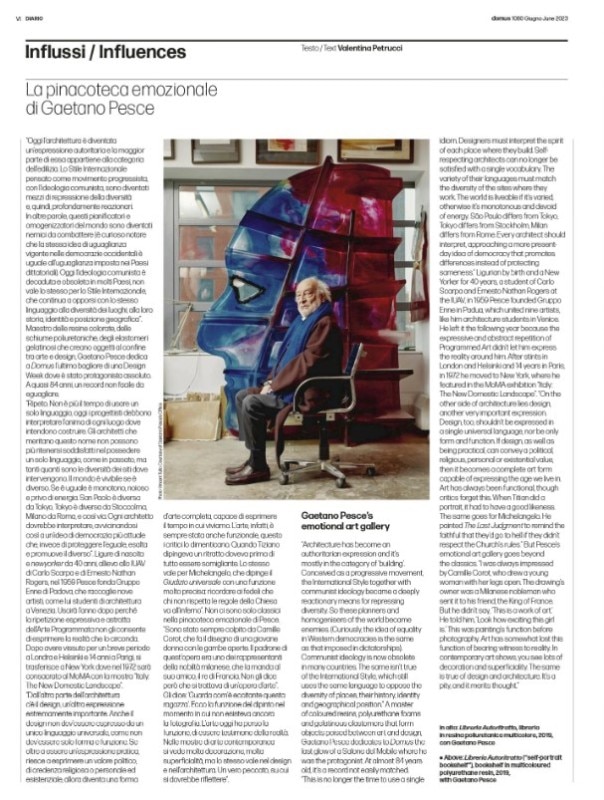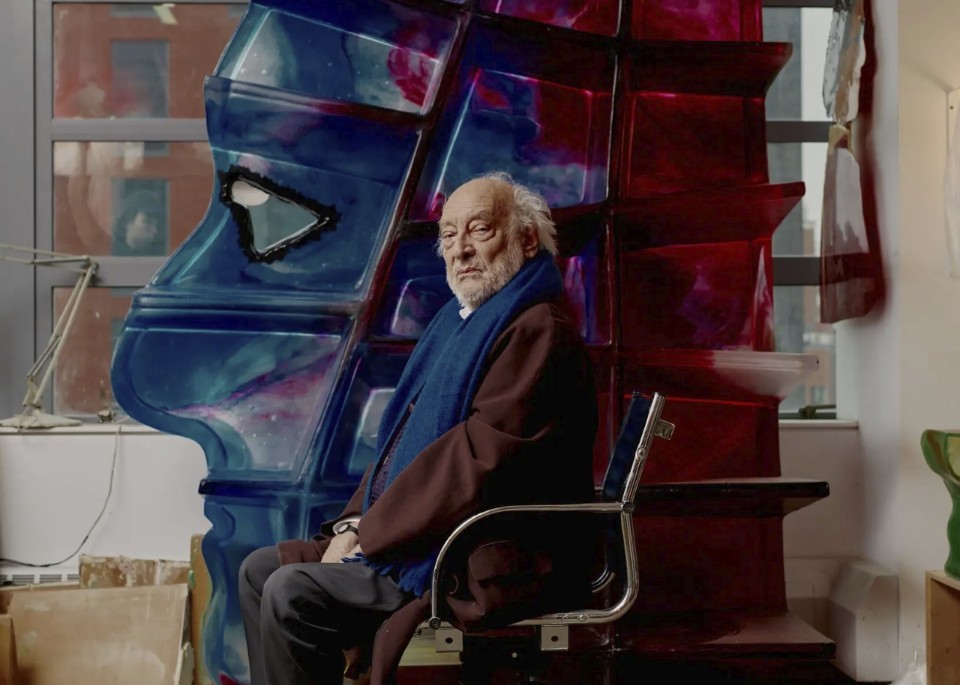This article was originally published on Domus 1080, June2023.
“Architecture has become an authoritarian expression and it’s mostly in the category of ‘building’. Conceived as a progressive movement, the International Style together with communist ideology became a deeply reactionary means for repressing diversity. So these planners and homogenisers of the world became enemies. (Curiously, the idea of equality in Western democracies is the same as that imposed in dictatorships). Communist ideology is now obsolete in many countries. The same isn’t true of the International Style, which still uses the same language to oppose the diversity of places, their history, identity and geographical position.”
A master of coloured resins, polyurethane foams and gelatinous elastomers that form objects poised between art and design, Gaetano Pesce dedicates to Domus the last glow of a Salone del Mobile where he was the protagonist. At almost 84 years old, it’s a record not easily matched.
“This is no longer the time to use a single idiom. Designers must interpret the spirit of each place where they build. Selfrespecting architects can no longer be satisfied with a single vocabulary. The variety of their languages must match the diversity of the sites where they work. The world is liveable if it’s varied, otherwise it’s monotonous and devoid of energy. São Paulo differs from Tokyo, Tokyo differs from Stockholm, Milan differs from Rome. Every architect should interpret, approaching a more present-day idea of democracy that promotes differences instead of protecting sameness.”

Ligurian by birth and a New Yorker for 40 years, a student of Carlo Scarpa and Ernesto Nathan Rogers at the IUAV, in 1959 Pesce founded Gruppo Enne in Padua, which united nine artists, like him architecture students in Venice. He left it the following year because the expressive and abstract repetition of Programmed Art didn’t let him express the reality around him. After stints in London and Helsinki and 14 years in Paris, in 1972 he moved to New York, where he featured in the MoMA exhibition “Italy: The New Domestic Landscape”.
“On the other side of architecture lies design, another very important expression. Design, too, shouldn’t be expressed in a single universal language, nor be only form and function. If design, as well as being practical, can convey a political, religious, personal or existential value, then it becomes a complete art form capable of expressing the age we live in. Art has always been functional, though critics forget this. When Titian did a portrait, it had to have a good likeness. The same goes for Michelangelo. He painted The Last Judgment to remind the faithful that they’d go to hell if they didn’t respect the Church’s rules.”
The world is liveable if it’s varied, otherwise it’s monotonous and devoid of energy.
But Pesce’s emotional art gallery goes beyond the classics. “I was always impressed by Camille Corot, who drew a young woman with her legs open. The drawing’s owner was a Milanese nobleman who sent it to his friend, the King of France. But he didn’t say, ‘This is a work of art.’ He told him, ‘Look how exciting this girl is.’ This was painting’s function before photography. Art has somewhat lost this function of bearing witness to reality. In contemporary art shows, you see lots of decoration and superficiality. The same is true of design and architecture. It’s a pity, and it merits thought.”
Opening image: Photo Vincent Tullo. Courtesy Gaetano Pesce Office

